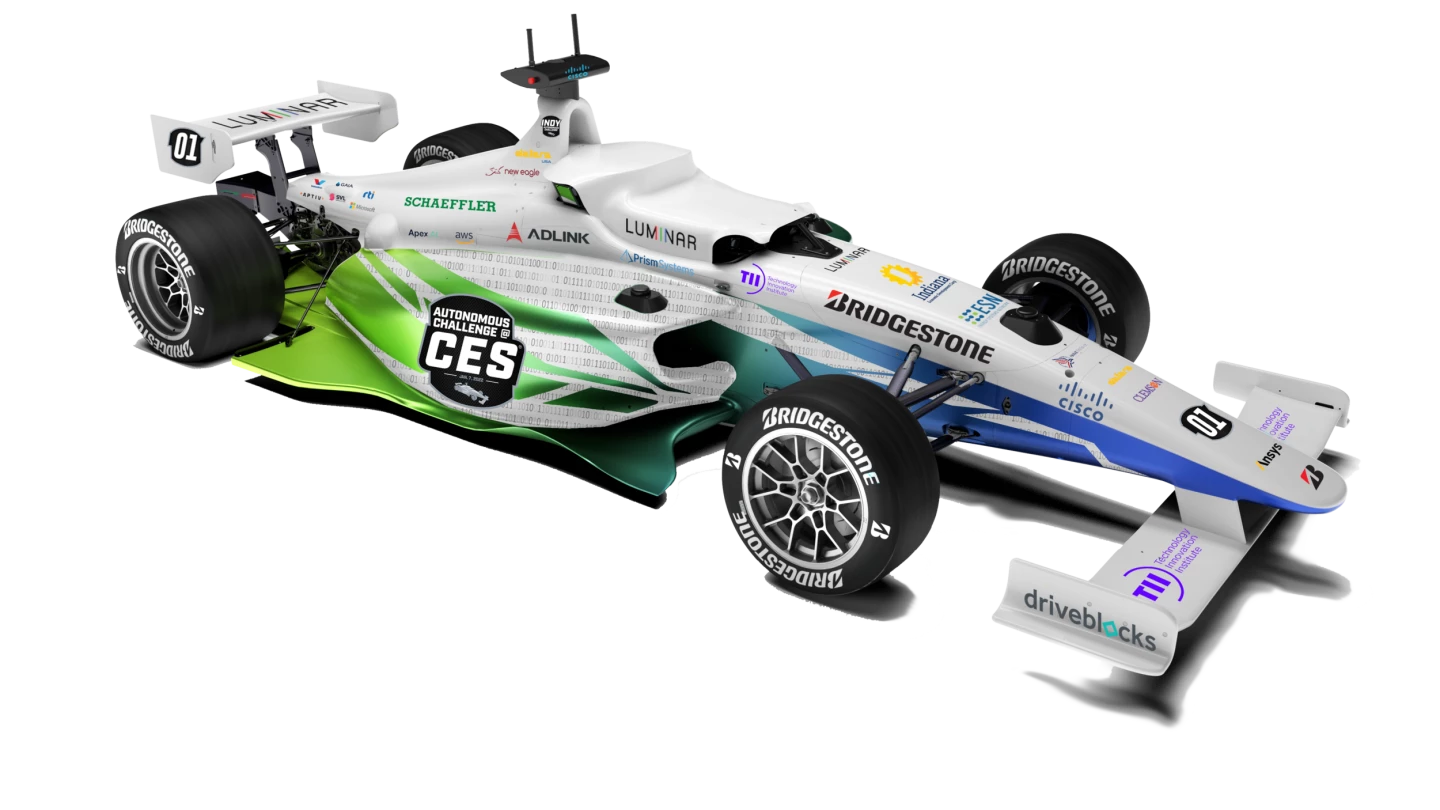An autonomous race team from the Indy Autonomous Challenge (IAC) has set a new land speed record for driverless cars, recording a two-way average of 192.2 mph (309.3 km/h) over a flying kilometer (0.62 miles) on a space shuttle airstrip at the Kennedy Space Center.
"Ladies and gentlemen, start your software." The PoliMOVE race team, a joint project between the Politecnico di Milano and the University of Alabama, won the world's first autonomous head-to-head car race at the Las Vegas Motor Speedway back in January, taking home US$150,000 in the process. Now it's written its name in the land speed books as well.
It's an odd thought, a driverless car being celebrated for going fast in a straight line – with no human driver on board, it's hard to get too fired up about the risks involved, and the whole thing loses any sense of adrenaline. The same could really be said about the head-to-head race series as well; who really cares if one oversized slot car really beats another one around a track? There's no soap opera, no white knuckles.
On the other hand, this is racing as technological development, in its purest form. Self-driving street cars might drive fairly cautiously, but there will always be times when these machines unexpectedly find themselves at the limits of traction, cornering grip and even straight-line stability. So there's clearly a place for high-performance autonomy, which can develop the reactive and predictive capabilities of self-driving AIs and potentially give a future generation of robocars a few extra options when dealing with hairy situations. The IAC contest has certainly drawn plenty of interest from around the world, with an impressive 41 university teams signed up.

The record-setting car, a Dallara AV-21 kitted out with LiDAR, cameras, sensors, self-driving actuators, an nVIDIA Quadro RTX 8000 graphics processor and an autonomous driving brain, demonstrated an upgraded 4-cylinder turbo engine package in the process, gaining some 30 percent more power than the 335 kW (449 hp) of the previous generation. By our calculations, that's a healthy 435.3 kW (583.7 hp), and the same package will be going out to the rest of the teams, too.
“We were running a car operating on algorithms alone," said Prof. Sergio Savaresi, team lead of Politecnico di Milano, "where precision is paramount, and any small prediction error could have created a completely different outcome. This test run was exhilarating, and we are thrilled with the world record, but we’re also excited by the fact that this data will be made available to all, and the industry will benefit from our work and learnings.”
The record-setting run can be seen in the video below.
Source: IAC






